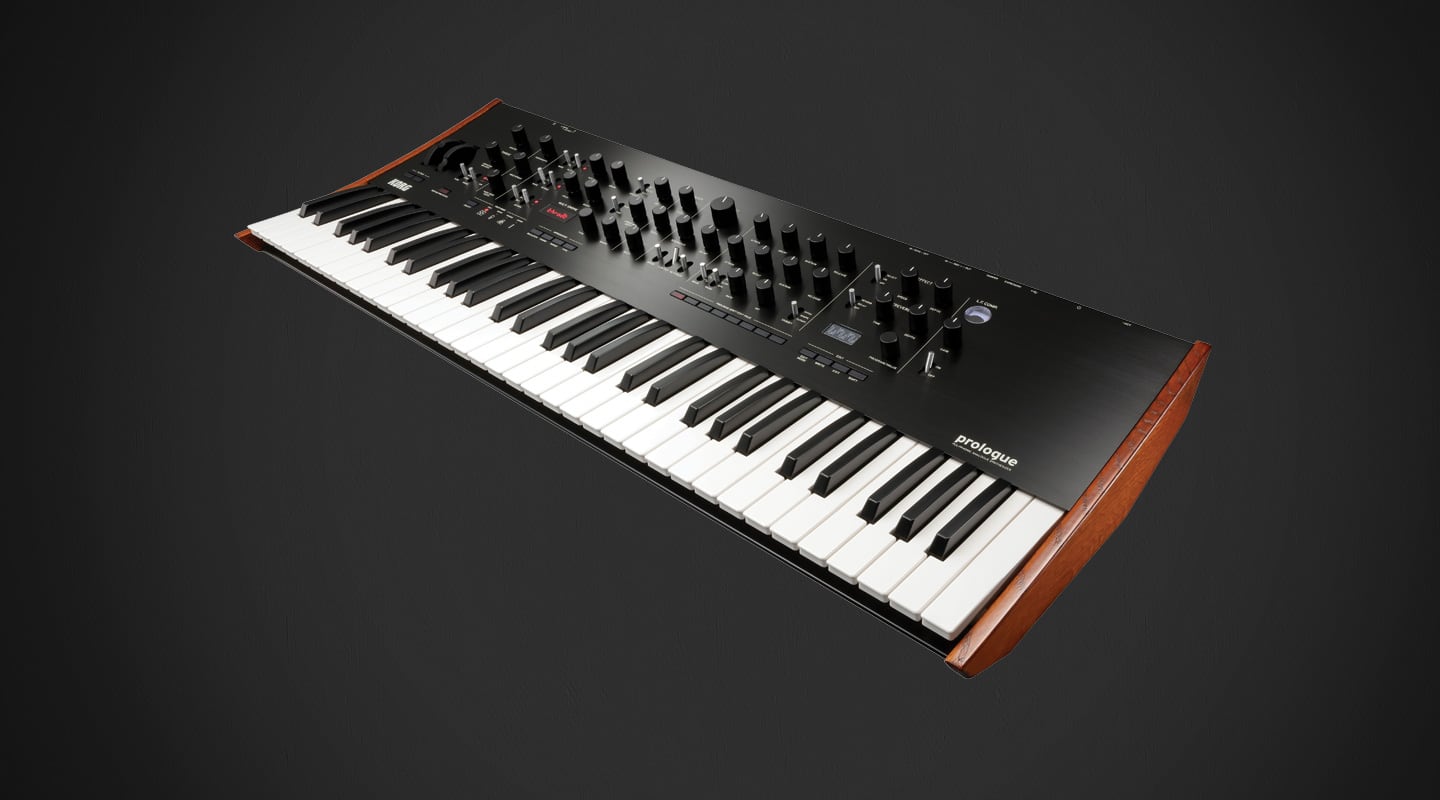
Review: Korg Prologue 16
This 16 voice analogue synth has more oscillators than you have fingers — goodbye voice-stealing anxiety! It also has some hardcore digital tricks up its sleeve.
It would be easy to characterise the Prologues as next-level iterations of the affordable four-voice Minilogue, but they’re considerably more advanced. Most notably, the oscillator section now includes a digital Multi-Engine oscillator that vastly expands the tonal palette and ability to create movement in the base tone of a voice.
Prologue comes in two versions: Prologue 8 features eight voices with a four-octave keyboard; Prologue 16 is the ‘deluxe’ model and provides eight additional voices, a five-octave keyboard, LF compressor and expanded front panel controls. I was sent the Prologue 16 to pore over, which gave me a good look at everything both new synths have to offer.
With all those voices comes a huge number of patch memories. There are 500 available, and the first 250 are occupied by factory presets that can be overwritten. It’s a lot of sounds, but Korg has devised a number of ways to filter the patches, including by Category, Alphabet, Like, Frequent, Envelope, Random, or one of four different Live Sets. Being able to ‘like’ presets while surfing the factory patches for favourites proved very convenient. The Live Set mode lets you use the program buttons during live performance to rapidly recall four banks of eight patches.
FIND YOUR VOICE
Four voice modes control how notes are allocated to the voices with additional control provided by Voice Depth. Poly mode allocates a single voice to each note, and increasing Voice Depth slightly spreads dual voices to each note, with increased level and detuning. Mono mode monophonically allocates a single voice to each note. By increasing Voice Depth, a second voice is engaged as a sub oscillator with larger settings transposing the sub voice up to two octaves lower. Unison mode allocates all voices to each incoming note, stacked, with detuning increased by Voice Depth. Chord mode allocates voices to one of 14 preset chord shapes selected by the Voice Depth control. A variable Voice Spread function adds ear candy by spreading the voice allocations across the stereo field with increasing strength. In the case of the Prologue 16, having a 16-voice unison stack sounds truly massive and those on the quest for the ultimate super-saw sound will not be disappointed!
DIY OSCILLATORS
There are two types of oscillators onboard; analogue and digital. VCO1 and 2 are thoroughbred analogue oscillators, each having three waveshapes (saw, triangle, and pulse). The shape control provides wavefolding for the saw and triangle waves, and duty cycle adjustment (with a distinct zero-through point) for the pulse wave, it can then be modulated by the LFO. The pitch of VCO1 and VCO2 can be modulated by the second envelope either simultaneously or independently.
Versatile modulation functions between these oscillators include phase syncing of VCO2 to VCO1 — yielding classic hard sync sounds — or ring modulation. VCO1/2 also has a variable cross modulation circuit. Engaging sync and cross modulation simultaneously creates some truly searing leads and aggressive basses.
The third oscillator is a digital Multi-Engine oscillator, which stretches significantly beyond the VCO-based waveforms. It has three core modes.
VPM Mode: 16 preset VPM/FM variants available; from simple bread-and-butter waveshapes (including proper sine waves) through to throaty, vocal-sounding options popular in modern EDM genres. Aside from the shape, six additional parameters are tweakable, including a self-contained AR envelope.
NEED TO KNOW
Korg Prologue 16
Polyphonic Analogue Synthesizer
User Mode: 16 user slots are open for developers to design custom oscillators in the near future. From the factory, the first slot is occupied by ‘Waves’: a dual-oscillator wavetable synth with a ring modulate-able sub oscillator and bit-crushing functionality. Waves’ source code will be published as an example to follow. Development is intended only for experienced programmers (requiring skill in DSP math and programming C++), however, Korg may provide means for dabblers to also experiment. Further details regarding the SDK and development tools are available on Korg’s site (korg.com/au/products/synthesizers/prologue/sdk.php).
Noise Mode: The shape control brings tonal variation to the four noise sources, but the envelopes can’t modulate the shape, only the LFO can. Unlike the User and VPM/FM modes no further settings are offered in the menus. Furthermore, there is no means to do Sample and Hold modulation of parameters using noise as a source.
Not surprisingly, the Multi Engine is siloed from the analogue oscillators. It’s not possible to combine it with VCO-based sync, ring or cross modulation functions. While it offers a versatile range of tones, what’s currently on offer worked better in a supporting role to the analogue oscillators. Once open to developers, I’m sure the breadth of custom oscillators will invert that relationship.
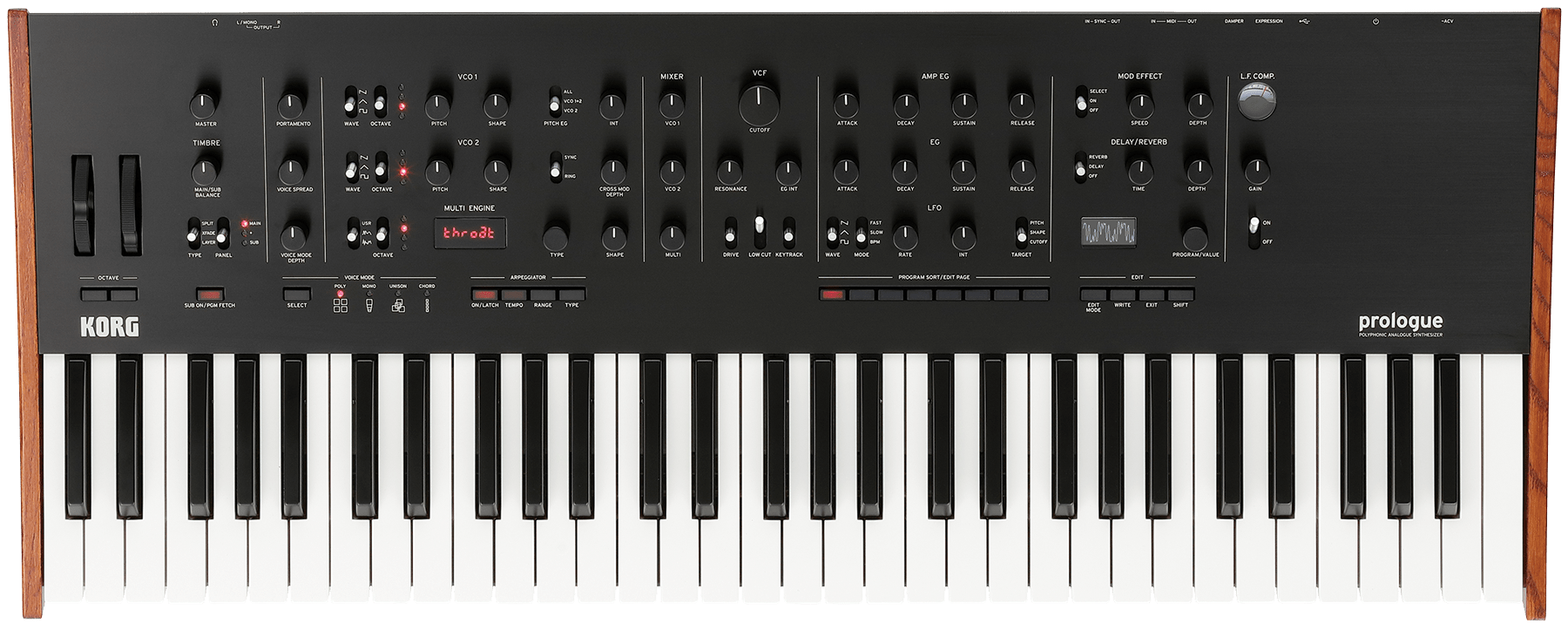
DOUBLE WHAMMY
A hybrid analogue and digital synth wasn’t enough for Korg, the Prologues are also bi-timbral. At the expense of a halved voice-count, you can have two sounds active simultaneously — main and sub — which can be layered, split, or cross-faded across the keyboard. Usefully, the arpeggiator can be independently assigned to the main or sub oscillators.
Six arpeggiator patterns are available, with four octave range options. Surprisingly, it lacks a note division setting and remains fixed at 16th notes, which might suffice for a band performer using tap-tempo, but is inconvenient when slaved to external MIDI devices. Oddly, the analogue sync input for Korg’s Volca series does offer either 16th or 8th note divisions.
As far as clock goes, the source can be derived from USB, MIDI, or Internal. Usefully, it can follow Clock appearing at the MIDI input while connected to the DAW via USB — great if you’re running a dedicated external MIDI clock generator to remedy sloppy DAW clock.
The sound of the Prologue 16 is sensational; there’s nothing quite like proper VCOs; 16 pairs, at that! Having so many voices on tap almost eliminates voice-stealing anxiety when performing complex passages. Simultaneous VCO1/2 cross modulation and hard sync, in tandem with the filter’s drive stage, makes the Prologue capable of massive, angry tones. With the Voice Spread function, pads float in front of your speakers. With the layer function, incredibly complex tones are available with relative ease.
Like most analogue poly synths, it can be a challenge to conjure really up-front bass tones in the way a dedicated mono synth can. When replicating a plucky bass patch on my Sequential Circuits Pro-One, the Prologue performed admirably, but didn’t quite have the same presence.

EFFECTING
The Prologue features superb-sounding dual 24-bit FX processors, which can be disengaged for a pure analogue signal path. The first offers four modulation effects: Phaser, Flanger, Chorus, Ensemble. With the exception of the rate and depth, parameter control is limited to selecting from a wide range of factory presets. The second offers either Reverb or Delay, with a similar lack of control. Thankfully, each algorithm sounds excellent and the streamlined approach is effective; but I did crave the ability to tweak further.
16 slots for User modulation effects indicates the possibility for programmers to roll effects of their own design. A tantalising prospect — programming skills required.
On the movement side, quite simply, the Prologues don’t have a modulation matrix. Modulation capabilities can be best summed up as follows: a pair of Envelope Generators (the first permanently routed to the VCA, the second routed to the VCF cutoff and pitches of VCO1/2), the highly routable Modulation Wheel and Expression Pedal, and the LFO (which can be routed to either oscillator pitch/waveshape or the filter’s cutoff frequency, but only fixed amounts). Depending on the algorithm selected, the Multi Engine can offer additional modulation, but other than the shape control, is independent of the rest of the synth.
With the Minilogue, you could fake having a modulation matrix by taking advantage of its motion-sequence recording function. Surprisingly, the motion-sequence feature didn’t make it into the Prologues.
Nevertheless, exclusive to the Prologue 16 is a low frequency compressor strapped to the output bus with simple gain control accompanied by a backlit VU meter. With minimal gain settings, it gives subtle punch and colour, ideal for evening out comping patches and pads. With substantial gain applied, it gives edgy presence and character to synth basses whilst reigning in dynamics.
PROLOGUE EPILOGUE
The Prologue is a clear winner for the live-performing keyboard fraternity, delivering an excellent range of classic analogue sounds through to more exotic tones afforded by the Multi-Engine oscillator. It feels fantastic to play and, on a sizeable PA system, is an experience to hear. With its compact shortboard format, and solid build quality, it’s destined to become a road-warrior favourite. The addition of an expression pedal should overcome the need for aftertouch, and serve a more versatile function since its value doesn’t reset to zero with each key release.
I’ve often stated that the hallmark of a good synth lies in its modulation matrix and available modulation sources, but perhaps I’m expecting too much. After all, the absence of a modulation matrix hasn’t affected my ongoing love affair with the Roland MKS-80.
The Prologue 8 is pitched at a price comparable to Novation’s Peak, which isn’t a true analogue synth and lacks a keyboard, yet has a modulation matrix and more modulation sources. Still, the possibilities of Korg’s forthcoming Multi Engine oscillator and Modulation FX open-development can’t be found elsewhere.
The larger Prologue’s 16 voices of analogue VCOs is a market first. If you’re a lover of pads dripping with analogue warmth and love playing big chords across both hands without concern for voice-stealing, the Prologue should satisfy in a manner which other analogue polys can’t touch. Its price will draw comparisons with DSI’s Rev 2, however, thanks to its high polyphony, it will stand proudly as The Player’s dream synth, destined to be a modern-day classic.











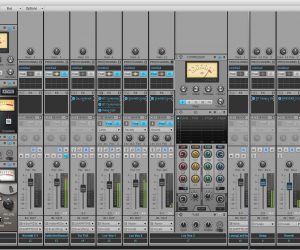
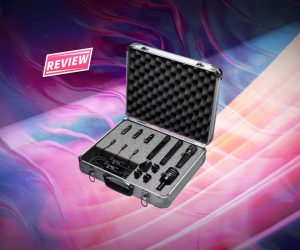
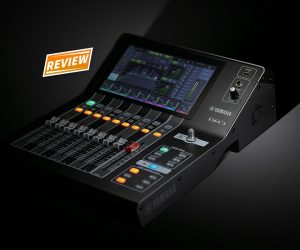






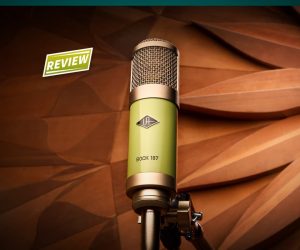

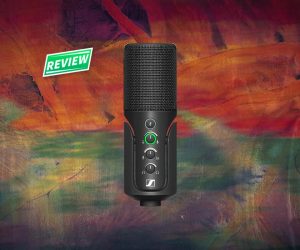


RESPONSES